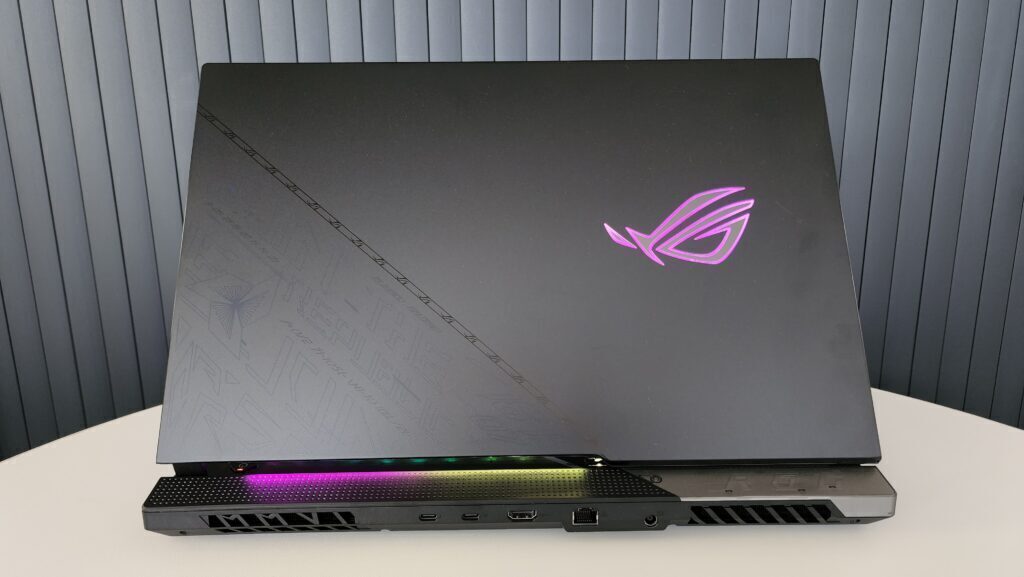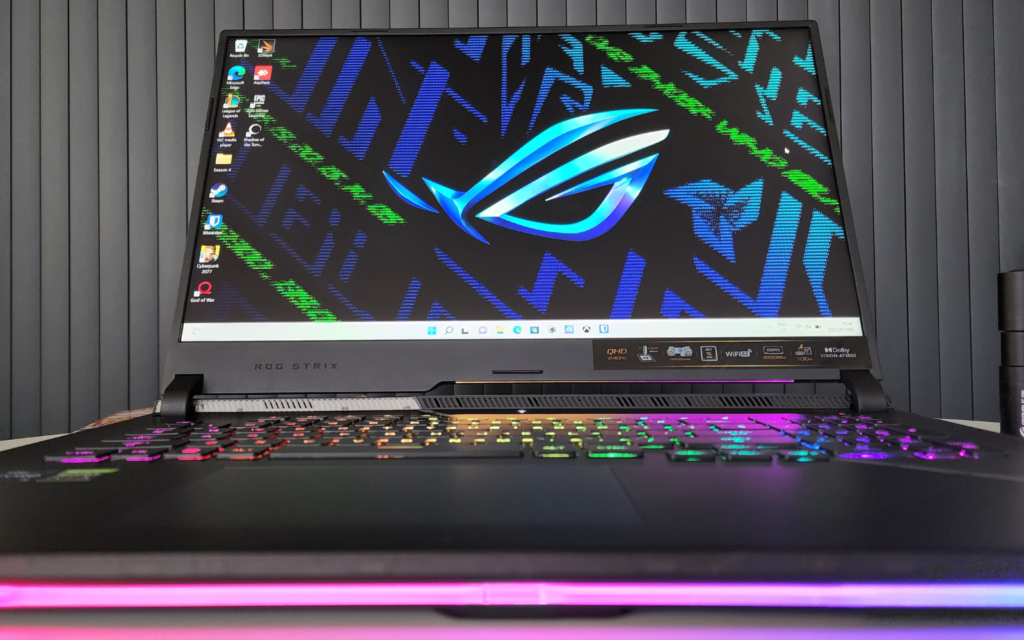If you want the most powerful gaming machine on the market then this is it. You're getting loads of performance but you're also paying a whole lot of money. The standard ROG Strix Scar 17 is an absolute bargain by comparison.
-
Design
-
Display
-
Performance
-
Price
-
Features
When Asus announced the Special Edition (SE) update to its Strix Scar 17 back in May we didn’t think much of it. Until we saw the spec sheet. We knew it would probably be epic but we’d have to wait until the review samples for that to be confirmed. Well, they’re in. And it’s confirmed.
Asus hasn’t changed much else about the Strix, aside from some crazy internal upgrades. But, for gamers, the internals are what matter most. RGB is cool and all, and this machine has plenty. But you might find it difficult to appreciate if you’re getting bodied in Call of Duty thanks to your trash framerates. That’s not a problem here.
Of course, those internal upgrades come at a price. In this case, it happens to be more money. We mentioned in our review of the non-SE Scar that price-to-performance gave it an advantage over its competitors. At R76,000 for the SE, has Asus squandered that advantage? Or do the upgrades make it worthwhile?
This is what power looks like

Those two chips are notorious power fiends. That power delivery trickery we mentioned is Asus pushing the maximum amount of power to the chips without causing too many headaches for Eskom. Both the CPU and GPU can take up to 175W of power when you fiddle around with the settings. When you use them together, like gaming, the system can draw a max of 240W – 65W for the CPU and 175W for the GPU.
And that’s with the two dual-vented fans running at close to max. We hope you weren’t planning to have a quiet conversation while running God of War maxed out at 4K. It can actually get a little distracting if you’re sitting close enough. We would recommend some good noise-cancelling headphones. We were going to also recommend you dial the settings back but who are we kidding? You don’t drop close to R80k to dial the settings back.
Our review model also came with 32GB of DDR5-4800 RAM and two 2TB NVMe SSDs configured in RAID 0. That means the system sees both drives as one but writes the data across both giving you double the speed, theoretically.
But can it run Crysis?
Those specs and all of these factors mean that the ROG Strix Scar 17 SE will chew up and spit out any game maxed out if you’re playing using the laptop’s internal 1440p display. If you want to plug in an external 4K monitor (or TV, as we did) then you might have to turn a setting or two down if you want a silky smooth 60fps. Enabling DLSS (Deep Learning Super Sampling) would help as well. This is still a laptop after all. You can’t expect desktop-level performance. Although, this Scar gets you awfully close.
It’ll also handle any creative workloads you can throw at it as well, whether that be 3D graphic design or video editing. If you’re a freelancer and like to work while you travel then something like this could conceivably work. If that’s the case you can get rid of your gym membership as well because you’ll be lugging around this 3kg monster with its 1kg 330W power brick. We did say ‘conceivably’.
More of the same
As for the rest of it, it’s pretty much the same as the non-SE Scar. You’re still getting the important rear ports like an HDMI 2.1, a 2.5Gbps Ethernet jack, and two USB-C ports with one supporting Thunderbolt 4 and the other supporting 100W power delivery and DisplayPort output. The side ports are the same as well. Still only USB-A 3.2 Gen 1 ports though, which is a pity. You do also get that same red Asus keystone on the right side. You can find some interesting uses for it if you want to put the effort in to set it up. Or leave it in the box. It’s up to you.
For this review sample, we received the same 17.3in 1440p 240Hz display as the non-SE model. Again, it’s pretty good, if a little dim. Maybe for the next one, Asus could use one of those mini LED or OLED panels it likes to stick in its laptops of late. Wouldn’t that be something?
The same 90Wh battery is powering everything. Although this time it’s paired with a larger 330W charging brick and we do mean ‘brick’ here. Same as before, you’re going to want to keep it plugged in as far as possible. It’ll last a good six or so hours on video playback but that drops off a cliff if you give it a heavy workload.
There is one key difference on the outside. The anodised metal lid has a hidden message but it’s only visible by way of UV light. Luckily, Asus has included one in the box along with a backpack for you to cart this monster around. Thanks, Asus. We noticed that it also tends to hold on to dust and fingerprints, so you might want to keep a lappie in that bag as well.
ROG Strix Scar 17 SE verdict
If money is more of an inconvenience for you and you need a new laptop, then here you go. This is the most powerful gaming laptop we’ve tested to date. It might not tick everyone’s box for what counts as a laptop but that’s technically what it is. It’s also technically out of reach for all but a few. This makes it a little harder to recommend over the non-SE, which is a much more wallet-worthy consideration. You can buy this one if you want to. It’s your bank account’s funeral.
